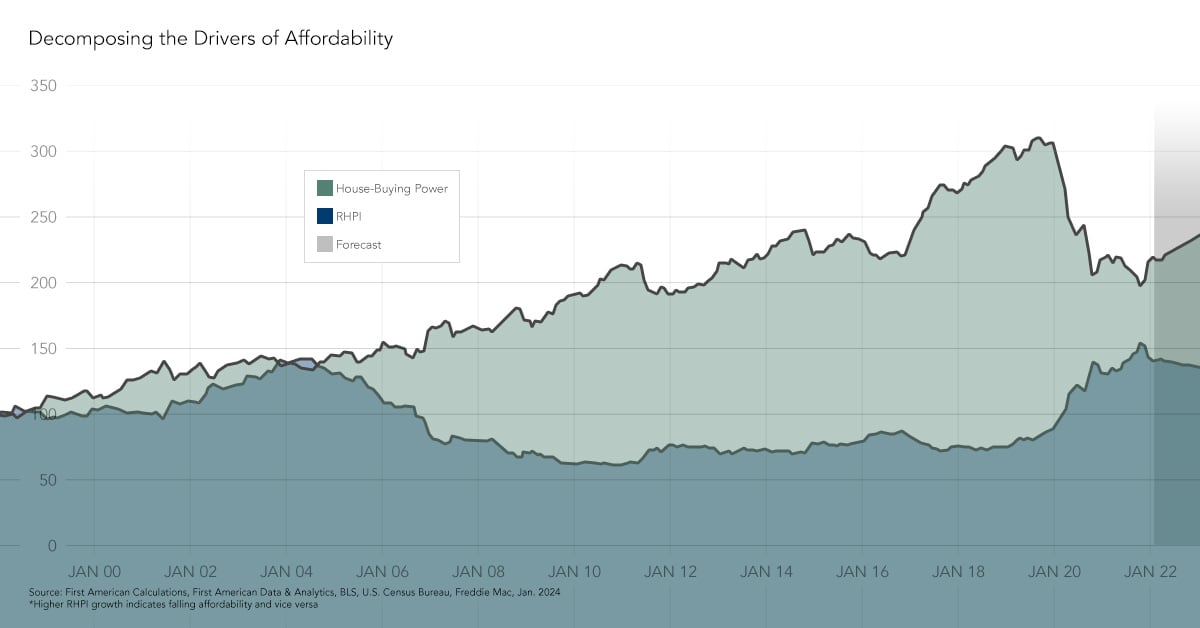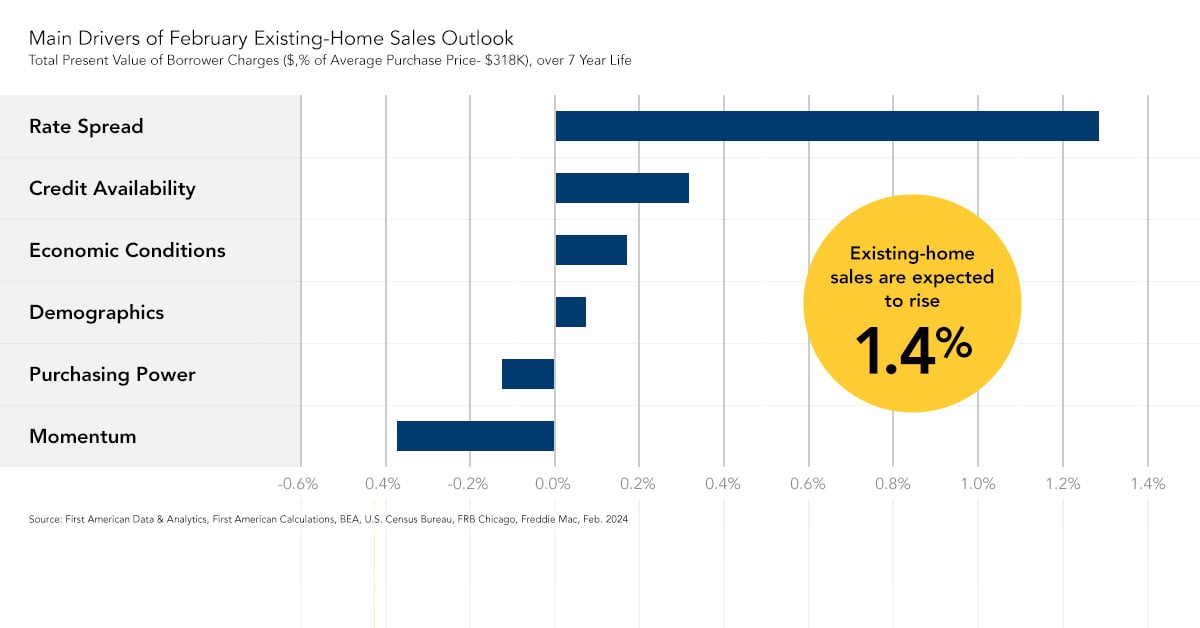First American’s proprietary Potential Home Sales model looks at March 2017 data and includes analysis from First American Chief Economist Mark Fleming on how the market is performing versus its potential.
March 2017 Potential Home Sales
For the month of March, First American updated its proprietary Potential Home Sales model to show that:
- Potential existing-home sales decreased to a 5.5 million seasonally adjusted, annualized rate (SAAR), a 1.5 percent month-over-month decline compared to February 2017.
- This represents an 83.3 percent increase from the market potential low point reached in December 2008.
- In March, the market potential for existing-home sales grew by 0.6 percent compared with a year ago, an increase of 31,000 (SAAR) sales.
- Currently, potential existing-home sales is 853,000 (SAAR), or 15.5 percent below the pre-recession peak of market potential, which occurred in July 2005.
Market Performance Gap
- The market for existing-home sales is underperforming its potential by 2.3 percent or an estimated 129,000 (SAAR) sales.
- Market underperformance has improved 47 percent compared to this time last year. In March 2016, the housing market for existing-home sales was underperforming its potential by 275,000 (SAAR) sales.
Housing Demand Remains Strong for the Start of the Spring Buying Season
“Despite higher mortgage rates, the potential for home sales increased on an annual basis driven by steady income and job growth, along with a surge in building permits,” said Mark Fleming, chief economist at First American. “While it may be a little late for this spring, the increase in building permits is a welcome sign that some relief may be in sight for the inventory shortages that are holding back many markets from realizing their full potential this spring.”

Chief Economist Analysis Highlights
- The housing market’s potential for existing-home sales held steady in March, growing 0.6 percent over the past 12 months, despite increasing interest rates, in part fueled by strong building permit activity and continued employment gains as more people return to the workforce.
- According to the National Association of Realtors (NAR), housing inventory increased slightly, from 3.5 months’ supply in January to 3.8 months’ supply in February. However, upward pressure on house prices persists, as current homeowners remain reluctant to list their homes for sale out of concern they will not be able to find a home to buy.
- While affordability declined slightly in January, it is not affecting consumer demand. Rather, in the fourth quarter of 2016 owner-occupied home sales increased the fastest outside the top 25 largest markets, as first-time homebuyers are pursuing home purchases in less expensive markets, as the American Enterprise Institute (AEI)/First American National Housing Market Index showed.
- Strong consumer demand combined with continued healthy wage growth, which increased 2.7 percent over the past 12 months, continues to support a positive outlook for the spring home buying market.
What Insight Does the Potential Home Sales Model Reveal?
When considering the right time to buy or sell a home, an important factor in the decision should be the market’s overall health, which is largely a function of supply and demand. Knowing how close the market is to a healthy level of activity can help consumers determine if it is a good time to buy or sell, and what might happen to the market in the future. That’s difficult to assess when looking at the number of homes sold at a particular point in time without understanding the health of the market at that time. Historical context is critically important. Our potential home sales model measures what we believe a healthy market level of home sales should be based on the economic, demographic, and housing market environments.
About the Potential Home Sales Model
Potential home sales measures existing-homes sales, which include single-family homes, townhomes, condominiums and co-ops on a seasonally adjusted annualized rate based on the historical relationship between existing-home sales and U.S. population demographic data, income and labor market conditions in the U.S. economy, price trends in the U.S. housing market, and conditions in the financial market. When the actual level of existing-home sales are significantly above potential home sales the pace of turnover is not supported by market fundamentals and there is an increased likelihood of a market correction. Conversely, seasonally adjusted, annualized rates of actual existing-home sales below the level of potential existing-home sales indicate market turnover is underperforming the rate fundamentally supported by the current conditions. Actual seasonally adjusted, annualized existing-home sales may exceed or fall short of the potential rate of sales for a variety of reasons, including non-traditional market conditions, policy constraints and market participant behavior. Recent potential home sale estimates are subject to revision in order to reflect the most up-to-date information available on the economy, housing market and financial conditions. The Potential Home Sales model is published prior to the National Association of Realtors’ Existing-Home Sales report each month.



